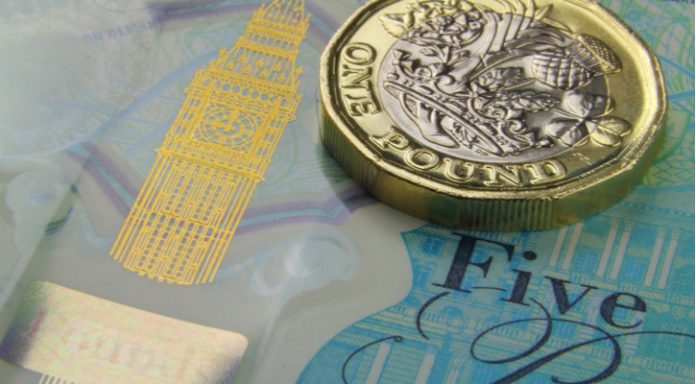- Pound (GBP) falls for a second day
- UK labor market softens
- Euro (EUR) supported by upbeat data
- ECB’s Isabel Schnabel to speak
The Pound Euro (GBP/EUR) exchange rate is falling for a second straight day. The pair fell -0.13% in the previous session, settling at €1.1352 after trading in a range between €1.1331 – €1.1406. At 05:25 UTC, GBP/EUR trades -0.15% at €1.1336.
The pound is falling after the government confirmed that business energy bills would rise from April as subsidies will be cut. Currently, businesses receive government support which caps prices at roughly the same level as household support. However, as of April, businesses will no longer see energy prices capped but instead will receive a discount to the current wholesale rate.
This means businesses will see energy prices rise considerably. While energy-intensive industries such as heavy manufacturing will receive extra help, this is expected to be less than in other countries such as Germany. Meanwhile, the hospitality sector is expected to have a very challenging year as energy bills are set to rise sharply as consumers rein in spending as the recession bites in the UK.
On the data front, Figures show that Britain’s labour market cooled further in December. The monthly index of vacancies compiled by the recruitment and employment confederation and KPMG dropped to 53, its lowest level since February 2021. This was down from 54.1 in November.
The euro is rising, extending gains from yesterday after some encouraging data. German industrial production varies by more than expected at 0.2%, up from -0.1%. Meanwhile, the Sentix investor index also rose for a third straight month. The index increased to -17.5 in January, its highest level in 7 months, and up from -21 in December. This suggests that the expected recession in the eurozone could be milder than feared.
Today there is no high-impacting eurozone data instead, all eyes will be on ECB’s Isabel Schnabel, who is due to speak later today and could shed some light on where interest rates could be heading.





